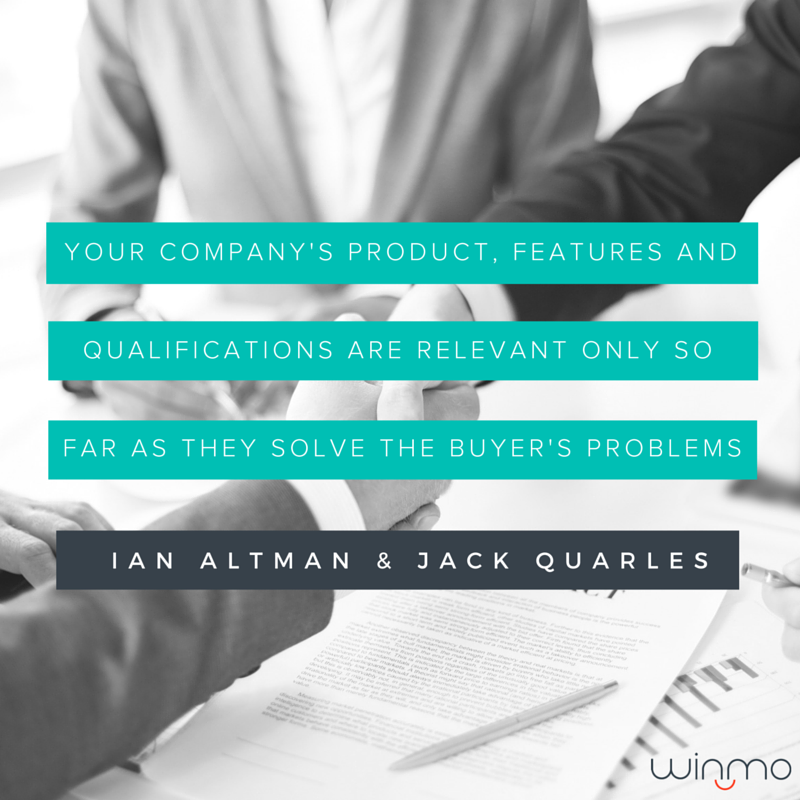In the first article in this two-part series I outlined a step-by-step strategy to help overcome fear in proactive new business through the practice of education and interviews.
To further empower you to win more business, in this follow-up to “Selling less and teaching more,” I want to share with you proven and effective pointers to conduct these prospecting ‘interviews.’ So, let’s get to it shall we?
Prospecting Interviews for Agency New Business
How to conduct an effective interview (educating yourself) once you’ve secured an initial conversation with a prospect through inbound marketing or on-the-fly.
First, build a framework for the interview flow. There are four stages to an effective interview, and you need the answers to each section to prescribe the right solution.
- Issue: What experience caused a search for a solution?
- Impact & Importance: What is the impact of NOT solving? How important is this problem/need compared to other things?
- Results: How would we measure success together?
- Others Impacted: Who else needs to get involved? Now versus later?
Issue
This first stage of the interview should be a conversation about their experience and why they are seeking a solution. This discussion should be more about why, and less about what. It is your responsibility to learn more about why they feel it might be worth investing in a solution.
Examples:
- What inspired you to talk to me?
- Central issue you’re hoping to tackle?
- How long has it been going on?
- What have you tried to do to solve it?
- How did you determine that you needed to address this, now versus later?
Impact
The second stage of the interview is understanding the impact of NOT solving the issue. Ideally, in the form of something quantifiable like financial impact or consequence.
Examples:
- What happens if you don’t solve this?
- What else suffers because of this?
- How does not having a solution impact the organization?
- How do your employees/customers see this impacting them?
- A year from now, if still not solved, what would happen?
- Nobody is going to lose their job over this, right?
- Other clients have told us this same sort of issue causes X, Y and Z. How common is that here?
Importance
Now onto the relative importance or priority of solving the issue. Your questions should be around timeliness to establish their sense of urgency.
Examples:
- Compared to other things on your plate, how important is it to solve this issue right now? Why?
- What other things are likely to bump this from the priority list?
- Who would notice most if it didn’t get done?
Results
The fourth stage of the interview will set you apart more than anything else given how rarely in my  experience it is asked. You can only determine if the opportunity is a good fit if you and the prospect are aligned on the same side when it comes to expected results.
experience it is asked. You can only determine if the opportunity is a good fit if you and the prospect are aligned on the same side when it comes to expected results.
So educate yourself for a meeting of the minds.
Examples:
- The fact that we do some great work and you pay us does not translate into success.
- What will we be able to measure 6 or 12 months out to know we were successful?
- What’s the baseline for the results you’d need to see to make this endeavor worth while?
- What might it look like if we were WILDLY successful together?
- What would make it ‘high-five worthy’ months after completion?
- Could you even quantify the impact to the organization?
- If you had that level of engagement, how do you think that would show up on your balance sheet?
Others Impacted
The fourth and final stage is designed to avoid getting derailed through the sales process. Let’s face it, the person(s) you are speaking with will likely need to get others involved for final approval. Educate yourself and uncover these people early in the process.
Practice adding this to any conversation you’re having. You’ll be amazed at what you learn about who’s really in control of a decision.
Examples:
- Who else is most directly impacted by this issue?
- Who is likely to get the most benefit from the results we’ve discussed?
- Who is likely to have an opinion about how we measure impact / results?
- If there was one person most likely to throw their 2 cents in at the 11th hour, who would that be?
- Who will be the loudest opponent to this initiative? Why?
- Who will be the most vocal supporter of this initiative? Why?
Follow this prospecting interview formula for new business and see how powerful the notion of education is. No more pitching your capabilities. You’ll be selling less, and winning more.

